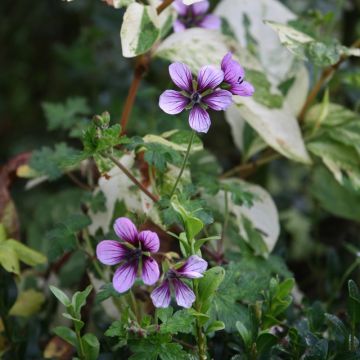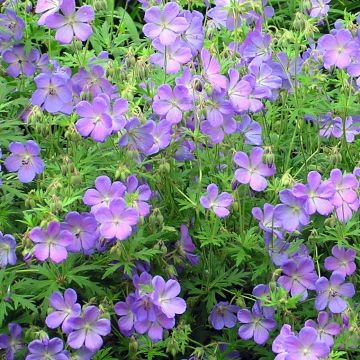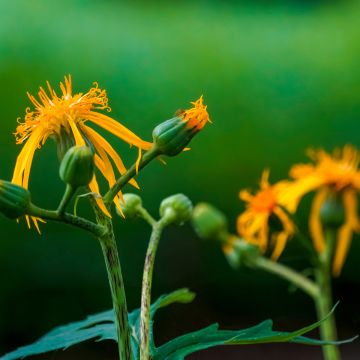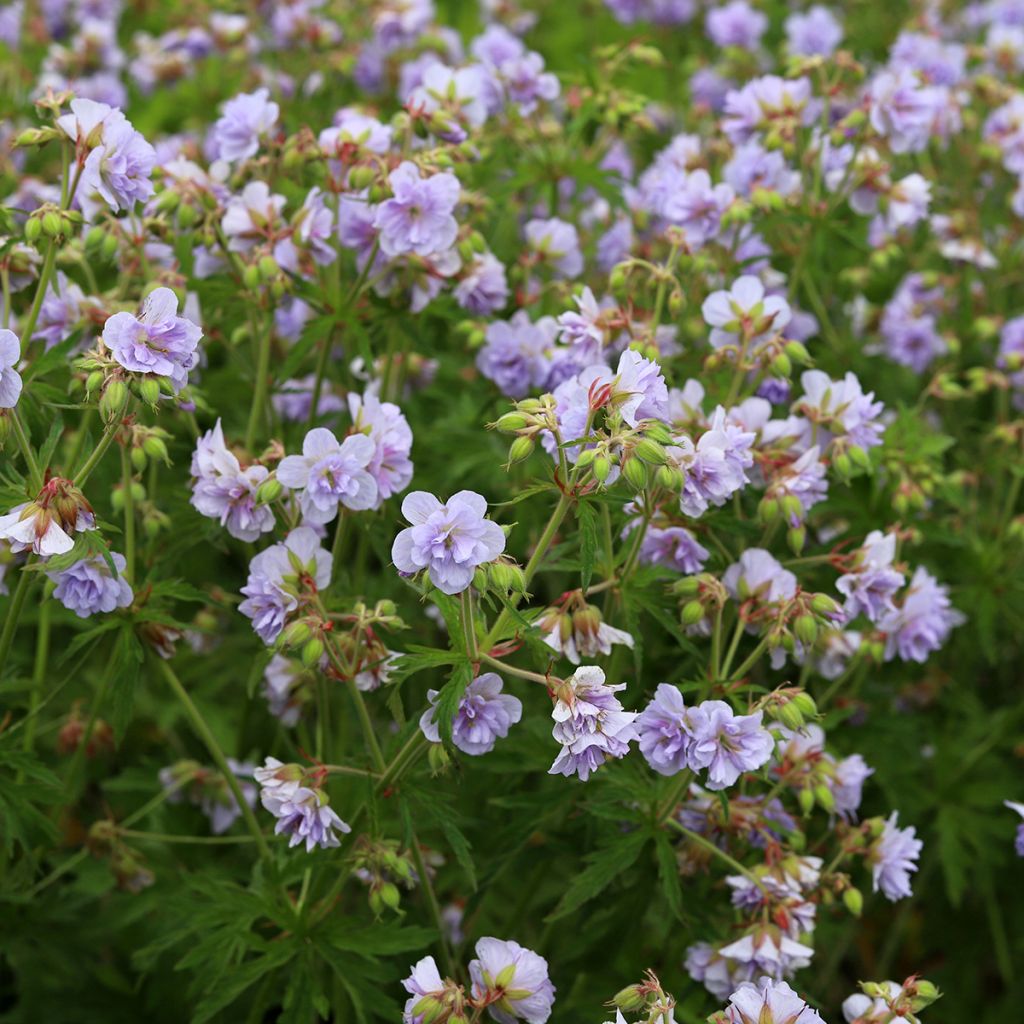

Geranium pratense Cloud Nine


Geranium pratense Cloud Nine
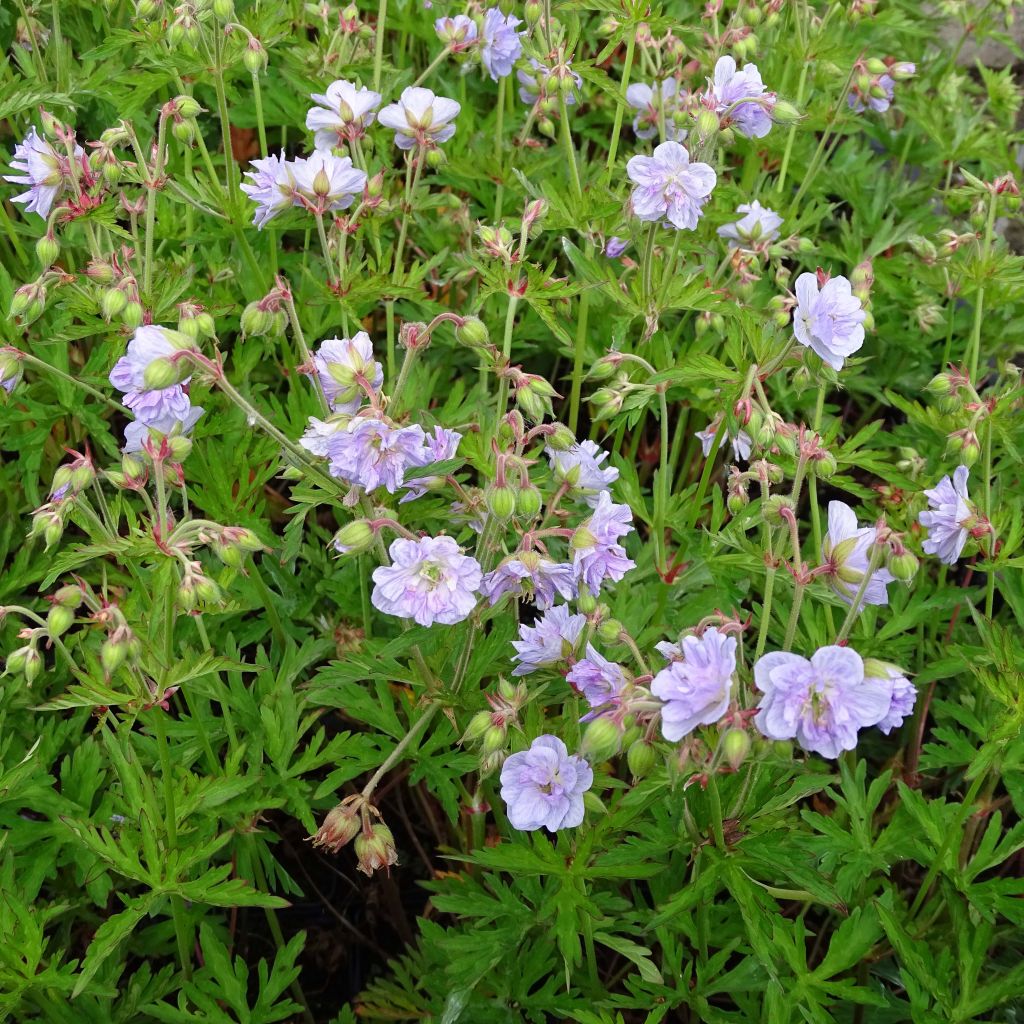

Geranium pratense Cloud Nine
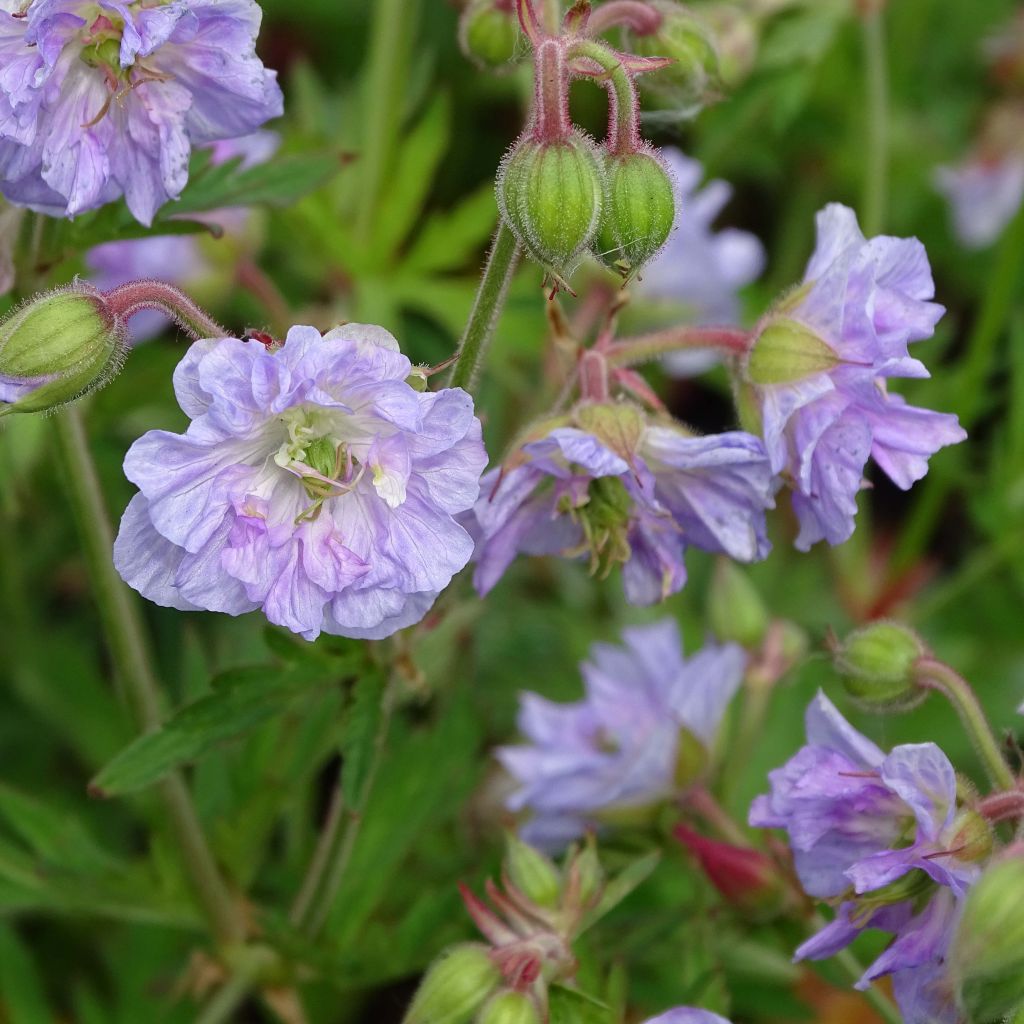

Geranium pratense Cloud Nine


Geranium pratense Cloud Nine
Geranium pratense Cloud Nine
Geranium pratense Cloud Nine
Meadow Cranesbill, Meadow Geranium
Perfectly healthy young plant, with well-developed roots. Delivered on the chosen date with efficient packaging for transportation. Placed immediately in the bed that was awaiting it, at the base of bushes and shrubs (witch hazels, hydrangeas), accompanied by salvias and other perennial geraniums at the front. Once grown, the foliage should hide the foliage of daffodils and other bulbs.
Cecile, 03/03/2020
Why not try an alternative variety in stock?
View all →This plant carries a 12 months recovery warranty
More information
We guarantee the quality of our plants for a full growing cycle, and will replace at our expense any plant that fails to recover under normal climatic and planting conditions.
From €5.90 for pickup delivery and €6.90 for home delivery
Express home delivery from €8.90.

Does this plant fit my garden?
Set up your Plantfit profile →
Description
The Geranium pratense 'Cloud Nine' has won the silver medal at the HTA National Plant Show 2017 in England. This superb improvement of the meadow cranesbill with double flowers is a charming and vigorous variety, unaffected by diseases and pests and easy to control as it does not produce seeds. This perennial quickly forms a large clump of finely cut foliage and is adorned with exquisite, well-double flowers in a soft and luminous blue-mauve in late spring and late summer. Stunning in a romantic border, it will accompany all the plants in the garden, as well as roses and all your favourite bushes.
Floriferous, generous, and easy to grow, perennial geraniums have everything going for them. Especially since, unlike Balcony Geraniums (which are actually Pelargoniums) with which they are sometimes confused, they are perfectly hardy, at least down to -15°C (5°F), and therefore remain in the ground all winter.
Originally from Europe, Central Asia, and China, and belonging to the Geraniaceae family, Geranium pratense is the origin of many cultivars with very easy-to-grow single or double flowers in any good garden soil that remains fresh, in sun or partial shade.
The 'Cloud Nine' variety is a beautiful novelty recently obtained by a small English nursery. The plant, particularly vigorous, has a bushy clump-like habit, almost shrubby, with a medium height of 80-90 cm (32-35in) and almost as wide. Its flowers, borne on branched stems, are delightful; cup-shaped, they are composed of several rows of petal shells that open like small mauve roses turning blue, sometimes delicately tinged with pink. Its abundant and recurrent flowering generally takes place in two stages: first in May-June, then again in August-September. Rich in nectar, it attracts and nourishes many pollinating insects. The foliage is semi-evergreen to deciduous, composed of small, finely cut, polygonal leaves, spring green, pubescent, measuring 20 cm (8in) long, almost all along the robust and hairy stems.
Easy to grow and not very demanding, this Cloud Nine meadow cranesbill tolerates any ordinary soil that is not too dry, and its beauty would rival the best varieties of Hellebores. In the garden, perennial geraniums can be planted almost anywhere, they are unmatched in enhancing neighboring plants; in rockeries, borders, in a woodland setting with wood anemones, ferns, and Woodrushes, near ground cover roses which they elegantly dress the base of, along borders with other varieties of double-flowered geraniums, and even in large pots. They are perfect companions for peonies, hybrid mulleins, or oriental poppies in cottage gardens.
Report an error about the product description
Geranium pratense Cloud Nine in pictures


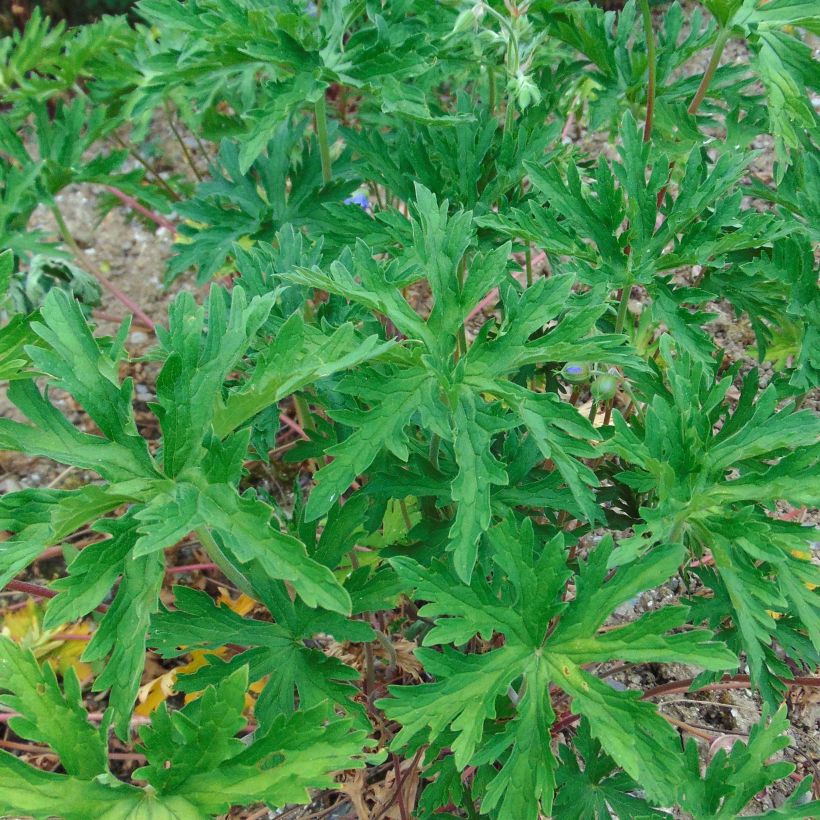

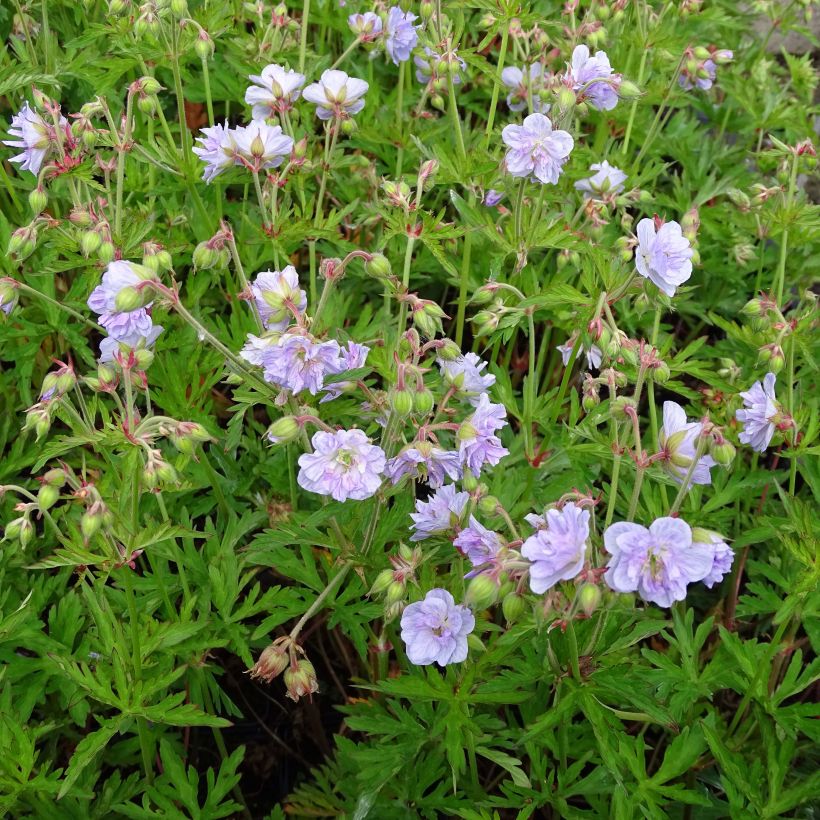

Flowering
Foliage
Plant habit
Botanical data
Geranium
pratense
Cloud Nine
Geraniaceae
Meadow Cranesbill, Meadow Geranium
Cultivar or hybrid
Other Hardy Geranium - Cranesbill
Planting and care
Perennial Geraniums can be planted in the garden during spring or autumn (frost-free period). They are quite tolerant of the situation and soil quality, although it is ideal to plant them in cool, humus-rich and well-drained soil, in full sun or partial shade. Easy to grow, they do not require any particular care, but we recommend removing faded flowers and leaves from July to September to encourage new growth. In cool soil, occasional and moderate watering is sufficient, but do not let them suffer too much during episodes of extreme heat.
Planting period
Intended location
Care
-
, onOrder confirmed
Reply from on Promesse de fleurs
Summer flowering perennials
Haven't found what you were looking for?
Hardiness is the lowest winter temperature a plant can endure without suffering serious damage or even dying. However, hardiness is affected by location (a sheltered area, such as a patio), protection (winter cover) and soil type (hardiness is improved by well-drained soil).

Photo Sharing Terms & Conditions
In order to encourage gardeners to interact and share their experiences, Promesse de fleurs offers various media enabling content to be uploaded onto its Site - in particular via the ‘Photo sharing’ module.
The User agrees to refrain from:
- Posting any content that is illegal, prejudicial, insulting, racist, inciteful to hatred, revisionist, contrary to public decency, that infringes on privacy or on the privacy rights of third parties, in particular the publicity rights of persons and goods, intellectual property rights, or the right to privacy.
- Submitting content on behalf of a third party;
- Impersonate the identity of a third party and/or publish any personal information about a third party;
In general, the User undertakes to refrain from any unethical behaviour.
All Content (in particular text, comments, files, images, photos, videos, creative works, etc.), which may be subject to property or intellectual property rights, image or other private rights, shall remain the property of the User, subject to the limited rights granted by the terms of the licence granted by Promesse de fleurs as stated below. Users are at liberty to publish or not to publish such Content on the Site, notably via the ‘Photo Sharing’ facility, and accept that this Content shall be made public and freely accessible, notably on the Internet.
Users further acknowledge, undertake to have ,and guarantee that they hold all necessary rights and permissions to publish such material on the Site, in particular with regard to the legislation in force pertaining to any privacy, property, intellectual property, image, or contractual rights, or rights of any other nature. By publishing such Content on the Site, Users acknowledge accepting full liability as publishers of the Content within the meaning of the law, and grant Promesse de fleurs, free of charge, an inclusive, worldwide licence for the said Content for the entire duration of its publication, including all reproduction, representation, up/downloading, displaying, performing, transmission, and storage rights.
Users also grant permission for their name to be linked to the Content and accept that this link may not always be made available.
By engaging in posting material, Users consent to their Content becoming automatically accessible on the Internet, in particular on other sites and/or blogs and/or web pages of the Promesse de fleurs site, including in particular social pages and the Promesse de fleurs catalogue.
Users may secure the removal of entrusted content free of charge by issuing a simple request via our contact form.
The flowering period indicated on our website applies to countries and regions located in USDA zone 8 (France, the United Kingdom, Ireland, the Netherlands, etc.)
It will vary according to where you live:
- In zones 9 to 10 (Italy, Spain, Greece, etc.), flowering will occur about 2 to 4 weeks earlier.
- In zones 6 to 7 (Germany, Poland, Slovenia, and lower mountainous regions), flowering will be delayed by 2 to 3 weeks.
- In zone 5 (Central Europe, Scandinavia), blooming will be delayed by 3 to 5 weeks.
In temperate climates, pruning of spring-flowering shrubs (forsythia, spireas, etc.) should be done just after flowering.
Pruning of summer-flowering shrubs (Indian Lilac, Perovskia, etc.) can be done in winter or spring.
In cold regions as well as with frost-sensitive plants, avoid pruning too early when severe frosts may still occur.
The planting period indicated on our website applies to countries and regions located in USDA zone 8 (France, United Kingdom, Ireland, Netherlands).
It will vary according to where you live:
- In Mediterranean zones (Marseille, Madrid, Milan, etc.), autumn and winter are the best planting periods.
- In continental zones (Strasbourg, Munich, Vienna, etc.), delay planting by 2 to 3 weeks in spring and bring it forward by 2 to 4 weeks in autumn.
- In mountainous regions (the Alps, Pyrenees, Carpathians, etc.), it is best to plant in late spring (May-June) or late summer (August-September).
The harvesting period indicated on our website applies to countries and regions in USDA zone 8 (France, England, Ireland, the Netherlands).
In colder areas (Scandinavia, Poland, Austria...) fruit and vegetable harvests are likely to be delayed by 3-4 weeks.
In warmer areas (Italy, Spain, Greece, etc.), harvesting will probably take place earlier, depending on weather conditions.
The sowing periods indicated on our website apply to countries and regions within USDA Zone 8 (France, UK, Ireland, Netherlands).
In colder areas (Scandinavia, Poland, Austria...), delay any outdoor sowing by 3-4 weeks, or sow under glass.
In warmer climes (Italy, Spain, Greece, etc.), bring outdoor sowing forward by a few weeks.








































